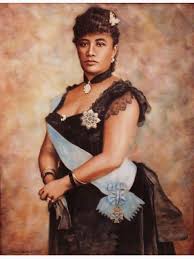Cixi (or Tz'u-hsi or Hsiao-ch'in)
1835 - 1908
A minor concubine of the emperor Hsien-feng (Xianfeng) when she became mother of his only son, she became a regent for this son when the emperor died. This son died, and she had a nephew named heir. After her co-regent died in 1881, she became de facto ruler of China. Her actual power surpassed that of another great Queen who was her contemporary, England's Queen Victoria.
A minor concubine of the emperor Hsien-feng (Xianfeng) when she became mother of his only son, she became a regent for this son when the emperor died. This son died, and she had a nephew named heir. After her co-regent died in 1881, she became de facto ruler of China. Her actual power surpassed that of another great Queen who was her contemporary, England's Queen Victoria.
Isabella II of Spain
1830 - 1904
Queen Isabella II of Spain was able to inherit the throne because of a decision to set aside Salic Law, whereby only males could inherit. Isabella's role in the Affair of the Spanish Marriages added to the 19th century's European turmoil. Her authoritarianism, her religious fanaticism, her alliance with the military and the chaos of her reign helped bring about the Revolution of 1868 that exiled her to Paris. She abdicated in 1870 in favor of her son, Alfonso XII.
Queen Isabella II of Spain was able to inherit the throne because of a decision to set aside Salic Law, whereby only males could inherit. Isabella's role in the Affair of the Spanish Marriages added to the 19th century's European turmoil. Her authoritarianism, her religious fanaticism, her alliance with the military and the chaos of her reign helped bring about the Revolution of 1868 that exiled her to Paris. She abdicated in 1870 in favor of her son, Alfonso XII.
 Queen Lili'uokalani of Hawaii
Queen Lili'uokalani of Hawaii
1838 - 1917Queen Lili'uokalani was the last reigning monarch of the Kingdom of Hawai'i, ruling until 1893. She was the composer of over 150 songs about the Hawaiian Islands and translated into English the Kumulipo, the Creation Chant.
Queen Victoria
1819-1901
Queen of Great Britain, Victoria gave her name to an era in western history. She ruled as monarch of Great Britain during a time of both empire and democratization. She was married to her cousin, Prince Albert, for 21 years before his early death, and their children intermarried with other royalty of Europe and played major roles in 19th and 20th century history.



No comments:
Post a Comment